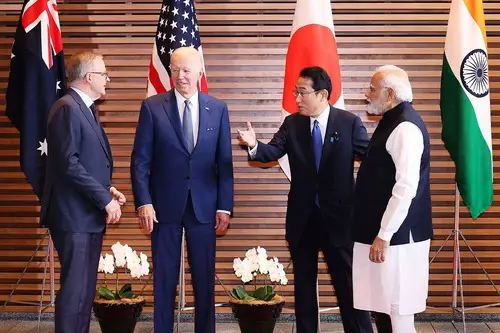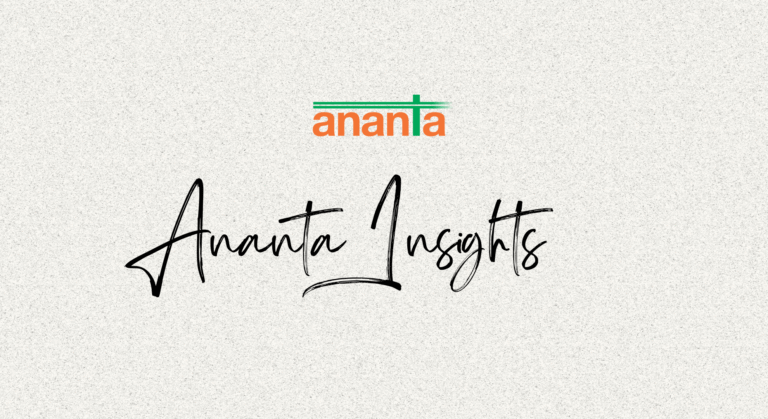The contents of this essay are based on conversations during the 7th India-US Forum
It is widely recognized that the Quad is a signature accomplishment for all four governments—Australia, India, Japan, and the United States. It has been effective in building habits of regular dialogues for cooperation. In the last five years, the framework has been reinvigorated with a clearer agenda and a greater acceptance of the Dialogue for regional architectures.
As discussions evolve within the framework, several dilemmas emerge. These include discussions on whether to deepen or broaden the agenda, prioritize security or development, and expand membership or maintain the current composition.
Navigating these dilemmas requires a delicate balance between adaptation to changing circumstances and preservation of the Quad's current embryonic state. Hardcore security challenges are better suited for security treaties and thus lie beyond the scope of this group. The priority is to ensure effective delivery of current commitments, especially towards smaller states.
While the Quad is not open to increasing its number of members, it is engaging with countries in an ad hoc manner. The group should find areas of collaboration with Pacific Island countries, ASEAN nations, and partners in the Indian Ocean. The agenda and stakeholder engagement should be flexible with the aim to consolidate. The inclusion of academia and industry, beyond G2G, to implement the work of the Quad can be a useful approach. The four members should also be conscious of the way in which Quad’s development is perceived in the region and the comfort with the pace of this development.
The China Challenge
The Quad’s reinvigoration in 2017 was a result of greater strategic clarity on the China challenge, that is, the need to engage with China while at the same time resisting its hegemonic policies. The US pushes for direct engagement with China to avoid miscommunication and unintended escalation. This is accompanied by a real-time briefing to India, Japan, and Australia. Recognizing the value of engagement, Australia, too, has attempted to stabilize its relationship with China. Simultaneously, the Australian government is prepared to call out China’s rapid military modernization which is happening without strategic reassurance in public. For India to engage with China, its long-standing territorial disputes and the 2020 border clashes need resolution first.
The forms of engagement with China may differ among Quad partners, but the long-term strategic goal remains the same. This includes an attempt to address a wide range of issues, including economic coercion, increased basing, and the conversion of infrastructure ports to strategic assets. The aim is to strengthen each member's diplomatic position, call out violations of the rules-based international order, and solicit support from countries in Asia, Pacific Island countries, and countries in and facing the Indian Ocean.
In order to compete with Chinese initiatives such as the Global Security Initiative, the Global Development Initiative, and the Global Civilization Initiative, it is strategic for the Quad to deliver for the Indo-Pacific countries. The delivery of COVID-19 vaccines, quality infrastructure projects, and effective disaster relief are relevant examples. The Quad partners can work together in international organizations to increase awareness about the pitfalls of Chinese initiatives and offer alternative frameworks. Narratives should be supplemented with concrete action.
There is a general acknowledgment that the Quad does not want the Indo-Pacific countries to make a choice between them and China but it strives to offer them a better choice. This approach is based on providing concrete alternatives characterized by openness, transparency, economic viability, and sustainability of debts. They will have a choice between authoritarian policies such as the Belt and Road Initiative (BRI) versus quality infrastructure projects based on principles. India and Japan’s work in Sri Lanka is a use-case example of the same. Similarly, Australia’s economic assistance to the South Pacific, which is four times more than any other country in the world, is yet another example. Rather than imposition, the approach is to craft responses according to local context.
The dramatic shifts in the external orientation and reversal of policies in countries like the Maldives and the Solomon Islands have to be dealt with through this approach. Preemptive discussions, complimentary efforts, the exchange of assessments, and long-term partnerships should be prioritized.
Quad is not a defense pact, but it facilitates trust-building that will assist against security threats in the future. In the event of a Chinese attack on any of the Quad members, the other three would exercise caution. While the particular character of the incident and the surrounding circumstances will dictate the situation, in such a scenario, the members are most likely to be each other’s first choice for engagement. Enhanced cooperation has strengthened the ability to function effectively on individual, bilateral, and trilateral levels across the four countries.
Quad’s approach to mutual defense is also through the establishment of a common operating picture along with other like-minded actors and the development of a common surveillance mechanism for deterrence. The increased complexity of maritime domain awareness through the expansion of single-service exercises to tri-service exercises and the introduction of Malabar naval exercises are pertinent examples.
The Quad agenda should not be misconstrued as being anti-China. It has immense potential to expand its efforts in the technology sector, deliver on existing promises within the region, increase engagement with the eastern coast of Africa, enhance private sector involvement, promote norm-building and standard-setting, bolster maritime domain awareness, and further develop capabilities to address monitoring challenges. Additionally, it can focus on training and capacity building for counterterrorism among its Indo-Pacific partners.
The Quad process has established a degree of comfort that is facilitated by regular communication and stocktaking in domains of maritime security, connectivity, telecommunication, critical technologies, education, and infrastructure. As the ease of conversation displays concrete outcomes and the big picture is more aligned, the systems should work even more closely to build a culture of enhanced cooperation.
























